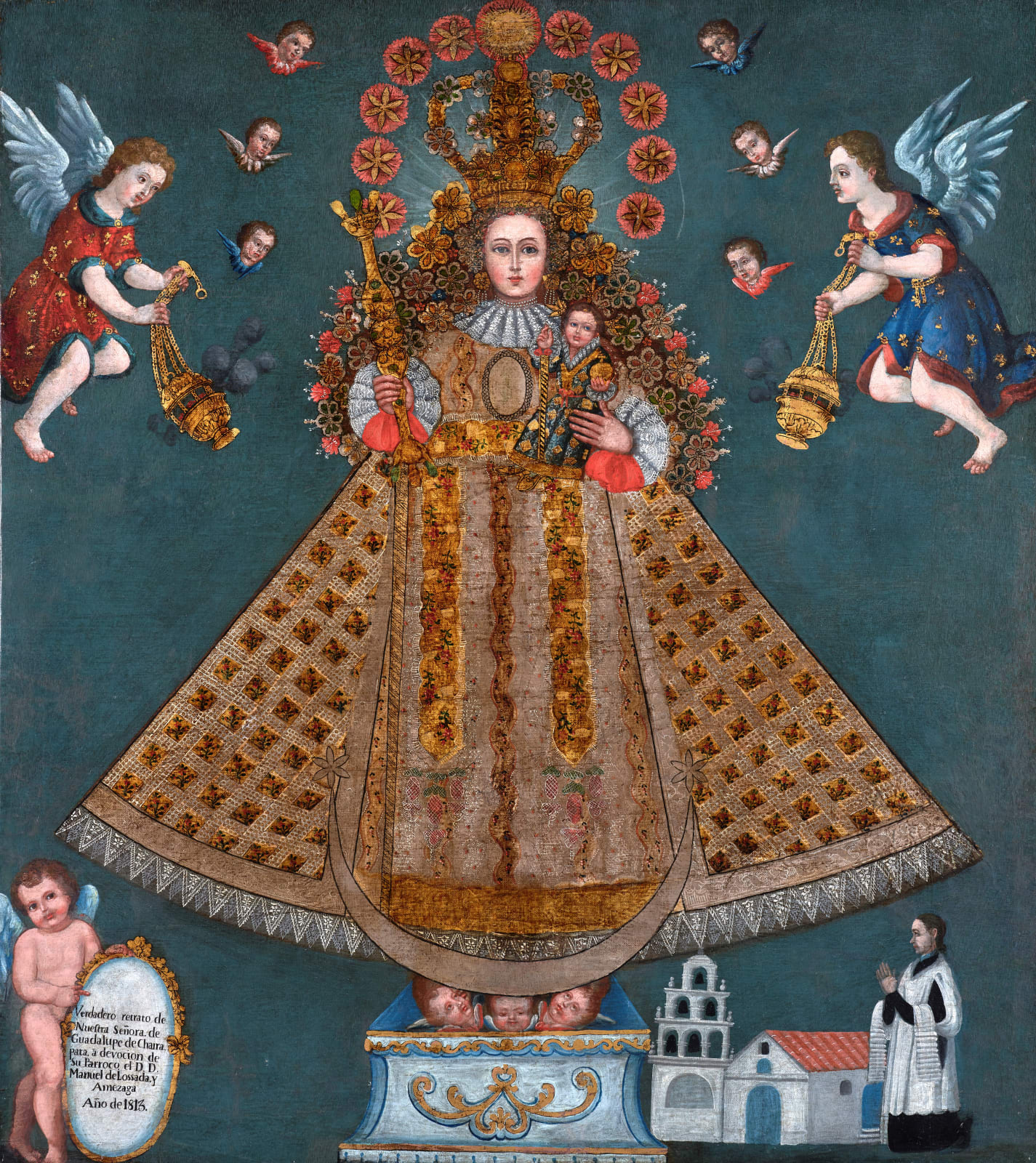Our Lady of Guadalupe of Extremadura
Chairapata, Potosí (Bolivia), 1813
Oil on canvas
Inscription “Verdadero retrato de Nuestra Señora. de Guadalupe de Chairapata, a devoción de Su Párroco el D. D. Manuel de Lossada, y Amezaga Año de 1813.”
Provenance
Private collection
The great veneration inspired by Extremadura’s Our Lady ofGuadalupe meant it became one of the most widely-depicted images over the centuries in a number of artistic formats, both in Spain and on the other side of the Atlantic.
The origin of the iconography goes back to a miraculous event that occurred to a cowherd from Cáceres (Extremadura, Spain), Gil Cordero, in the late 13th century in the nearby Guadalupe river area.12 After it had been lost for several days, Gil came across the dead body of one of his cows and, just as he was about to skin it for its hide, it came back to life. The Virgin then appeared to him, speaking the following words: “… you will go back to your lands, and you will tell the clerics and other people to come to this place where I appeared to you, and to dig here, and they will find an image of me.” A group of people subsequently travelled to said location, and there they found a wooden carving of the Virgin.
READ ESSAY
